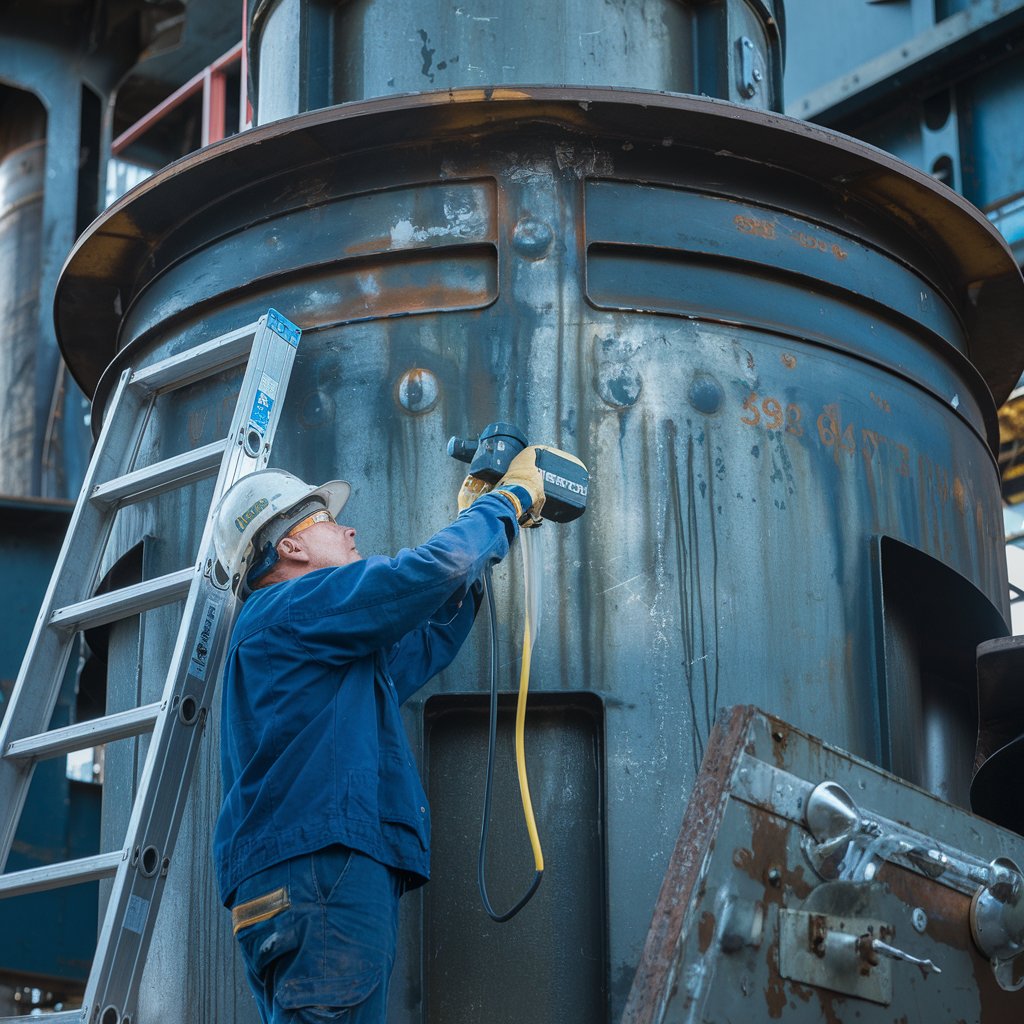The Non-Destructive Testing (NDT) and inspection industry is on the brink of transformative change, driven by technological advancements and evolving market demands. As industries increasingly depend on NDT for safety and reliability, understanding the future landscape is essential. This article explores the future of NDT and inspection, focusing on innovations, trends, and challenges, while incorporating semantic keywords for better optimization.
The NDT and inspection industry is expected to reach USD 18.4 billion by 2029 from 11.6 billion in 2024, at a CAGR of 9.6% during the 2024-2029 period. Various companies are investing in NDT and Inspection which gives an opportunity for growth in the NDT and Inspection industry . The NDT and Inspection industry is continuously developing, with the presence of multiple players. North America is likely to contribute significantly to the growth of the NDT and Inspection industry . Similarly, the Asia Pacific, Europe, and RoW regions are expected to be the growing market for the forecasted period.
1. Technological Advancements in NDT
a. Automation and Robotics in Non-Destructive Testing
The future of NDT is heavily influenced by automation and robotics. Automated inspection systems enhance precision and efficiency, significantly reducing human error. Drones and robotic platforms are now utilized for inspections in hazardous or hard-to-reach locations, such as offshore oil rigs and high-rise structures.
For example, drones equipped with high-resolution cameras and thermal sensors facilitate aerial inspections, delivering real-time data while minimizing operational costs and safety risks. This automation trend not only streamlines inspection processes but also improves safety standards across various industries.
b. Artificial Intelligence and Machine Learning
AI and machine learning are set to revolutionize the NDT landscape. These technologies enable advanced data analysis, allowing systems to detect patterns and anomalies in inspection data. Machine learning algorithms can classify defects in materials more accurately, thereby improving inspection outcomes.
Predictive analytics powered by AI will play a crucial role in maintenance strategies, enabling organizations to anticipate equipment failures and schedule timely interventions. This predictive maintenance approach enhances operational efficiency and extends asset lifespans.
c. Advanced Imaging Techniques in Inspection
Innovations in imaging technologies are enhancing the capabilities of NDT. Techniques such as phased array ultrasonic testing (PAUT) and computed tomography (CT) provide high-resolution, detailed insights into material integrity. These advanced methods are particularly beneficial in critical industries like aerospace and manufacturing, where precision is paramount.
CT imaging, for example, allows for three-dimensional analysis of components, revealing internal defects without destructive testing. As these advanced imaging techniques become more cost-effective, they will likely become standard in NDT practices.
Download PDF Brochure @ https://www.marketsandmarkets.com/pdfdownloadNew.asp?id=882

2. Regulatory Compliance and Standards in NDT
The future of NDT is closely linked to evolving regulatory standards. As industries face increasing scrutiny, the demand for compliant NDT services will rise. Companies must remain vigilant in understanding and adhering to regulations set by organizations like the American Society for Nondestructive Testing (ASNT) and ISO.
This regulatory environment will drive the need for enhanced documentation and traceability in NDT processes. Digital solutions for record-keeping will become indispensable, allowing companies to maintain comprehensive inspection histories that demonstrate compliance.
3. Sustainability and Environmental Considerations in Inspection
Sustainability is becoming a vital consideration in the NDT and inspection industry. Companies are increasingly adopting eco-friendly practices that reduce waste and minimize environmental impact. Non-invasive inspection methods, such as ultrasonic and eddy current testing, are favored for their sustainability.
Additionally, the shift to remote inspections reduces travel-related carbon footprints, aligning with corporate sustainability goals. As environmental regulations become stricter, NDT providers that prioritize sustainable practices will gain a competitive advantage.
4. Integration of IoT Technologies in NDT
The integration of Internet of Things (IoT) technologies is revolutionizing the NDT industry. IoT-enabled sensors embedded in machinery allow for continuous monitoring of critical parameters, facilitating real-time inspections. This shift from periodic assessments to continuous monitoring enhances safety and reliability.
For instance, in the oil and gas sector, IoT devices can detect leaks or structural weaknesses early, enabling proactive maintenance. This data-driven approach signifies a major advancement in inspection methodologies, ensuring operational efficiency and safety.
5. Addressing the Skills Gap in the NDT Workforce
As the NDT and inspection industry evolves, a significant skills gap emerges. With experienced professionals retiring, the need for a skilled workforce becomes increasingly urgent. Companies must invest in training programs that focus on both traditional NDT techniques and emerging technologies.
Partnerships with educational institutions can help bridge this skills gap by providing specialized training that prepares future professionals for the industry’s demands. Continuous learning initiatives will also be crucial for current employees to adapt to new technologies.
6. Global Market Growth and Future Opportunities
The NDT and inspection market is projected to experience significant growth in the coming years. Factors driving this growth include increased infrastructure development, stringent safety regulations, and the expanding renewable energy sector.
Emerging markets present substantial opportunities for NDT providers. As industries prioritize safety and quality assurance, companies that leverage innovative technologies and adapt to market trends will thrive in this competitive landscape.
The future of the NDT and inspection industry is characterized by innovation, regulatory evolution, and a focus on sustainability. As technological advancements reshape inspection practices, companies that embrace change and invest in workforce development will succeed. By leveraging new technologies and staying attuned to market demands, the NDT and inspection industry can continue to ensure safety and reliability across diverse sectors, solidifying its critical role in a rapidly changing world.
The report profiles major players in the NDT and Inspection companies are General Electric (US), MISTRAS Group (US), Olympus Corporation (Japan), Ashtead Technology (Scotland), Nikon Metrology NV (UK), SGS Société Générale De Surveillance SA, (Switzerland), Magnaflux (US), Eddyfi Technologies (Canada), Sonatest (UK), Intertek Group plc (UK), Applus+ (Spain), Bureau Veritas (France), Comet Group (Switzerland), TUV Rheinland (Germany), FISCHER TECHNOLOGY INC. (US), Acuren (US), CREAFORM (Canada), Vidisco Ltd. (Israel), DEKRA (Germany), Team, Inc. (US), Labquip NDT (US), Cygnus Instruments Ltd. (UK), FPrimeC Solutions Inc. (Canada), Carestream Health (US), and Element Materials Technology (UK).

